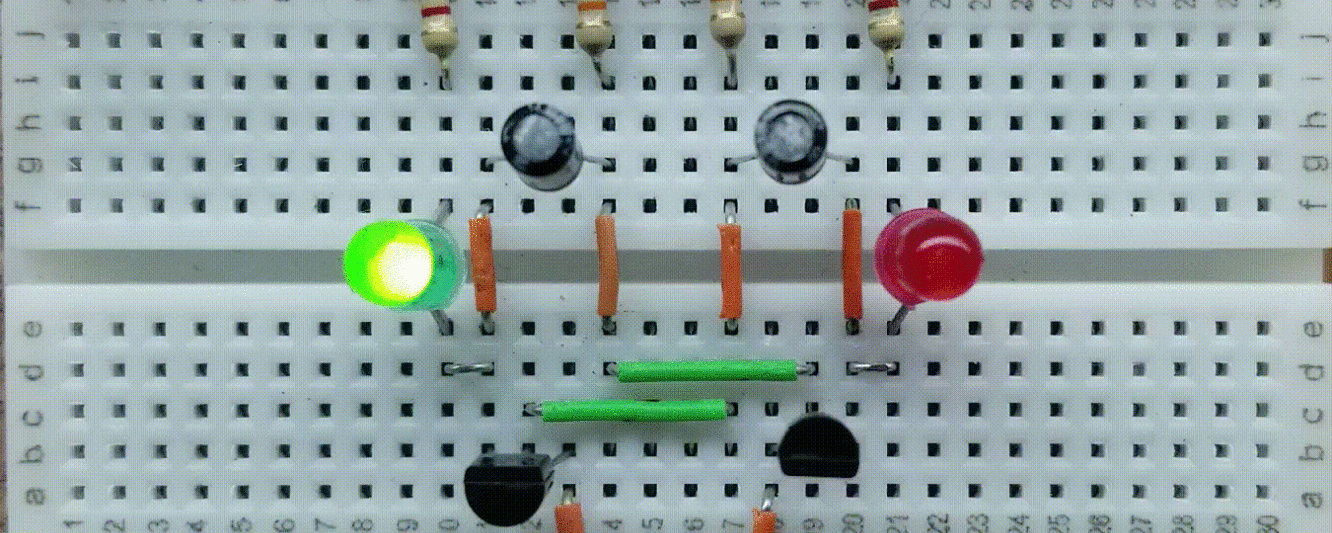Build a Transistor Toggle (push-on, push-off) Switch on a Breadboard What is a Push-on, Push-off Switch? The circuit described in this article is the equivalent of a latching push-button switch. So when you press it once, it is on and press it again, it is off. This electronic equivalent of a latching push-button is accomplished by a two-transistors and a […]
Constant Current Source
What is a Constant Current Source? The constant current source is a an important function in not only practical electronics, but also in circuit analysis. It provides a constant current regardless of the voltage drop that appears across it. This is also referred to as an “independent” current source. This is differentiated from a “dependent” current source, which has a […]
How Transistors Work
Bipolar Junction Transistor (BJT) Overview, Operating Modes, Switches, and Relay Driver Circuits Supplies Needed (if you’d like to build the following circuits) BJT Overview The BJT or bipolar junction transistor is a 3-terminal semiconductor device that can be used amplify current. The three terminals are the emitter, the base, and collector. The BJT is primarily used in three operating modes: […]
How to light an LED
Considerations when Lighting an LED There are two primary considerations for lighting an LED. LED Polarity LED current LED Polarity LEDs are diodes – and diodes only pass current in one direction. Therefore, if you hook an LED up backwards, it won’t light, and can even be damaged. Below is the schematic symbol for an LED. Note the direction of […]
Multiplexed LED Display Circuit
Build a Multiplexed LED Display Driver Introduction Driving a Single Display Digit Driving a single 7-segment LED display requires several things to be in place before something is actually displayed. A micro-controller or some other application relevant data source to apply pre-encoded information a 7-segment display driver. A 7-segment display driver to apply the encoded data to the display, At […]
What is Voltage and Current?
What is Voltage? Voltage is the electromotive force, charge, or pressure which tends to push electrons through a conductor such as a copper wire. Voltage is measured in terms of potential difference between two points. The higher the potential difference in voltage across a wire, the greater the pressure is to push the electrons through the wire. A 10 volt […]
Ohm’s Law – Hands On
Hands On Ohm’s Law Project Project Overview As with any lab project on BreadBoardCircuits.com, building the circuits are recommended, but not necessary. If you wish to just read along, you will still get a great deal of useful information out of the article. With this beginner’s project, you will learn Ohm’s Law basics and beyond – in theory and on […]
Transistorized PWM Generator
Build a Four-Transistor PWM Generator In a previous project, we designed and breadboarded a 1KHz multivibrator circuit consisting of four transistors. With a simple modification, that circuit will be able to produce a clean and adjustable Pulse Width Modulated output with a duty cycle of between 15% and 85%. This PWM Generator can easily be built on a breadboard. Before […]
Improved Astable Mulitvibrator with Clean Square Wave Output
Improving the Astable Mulitvibrator Circuit In a previous article, we built and described the operation of a classic astable mulitvibrator that used two NPN transistors and a few supporting components. It was a good basis for a multi-use oscillator, but had a major limitation in its ability as a practical circuit. By its nature, the output waveform had a rounded […]
Astable Multivibrator Circuit
The Classic Astable Multivibrator Oscillator What is a Mulitvibrator? A Multivibrator is an oscillator that consists of two amplifiers (transistors) and is cross-coupled by capacitors and resistors. What does “Astable” mean? “Astable” means “not stable. Thus an astable mulitvibrator is free-running. It spontaneously oscillates between states. It never reaches a stable (off or on) mode. This can be compared to […]
